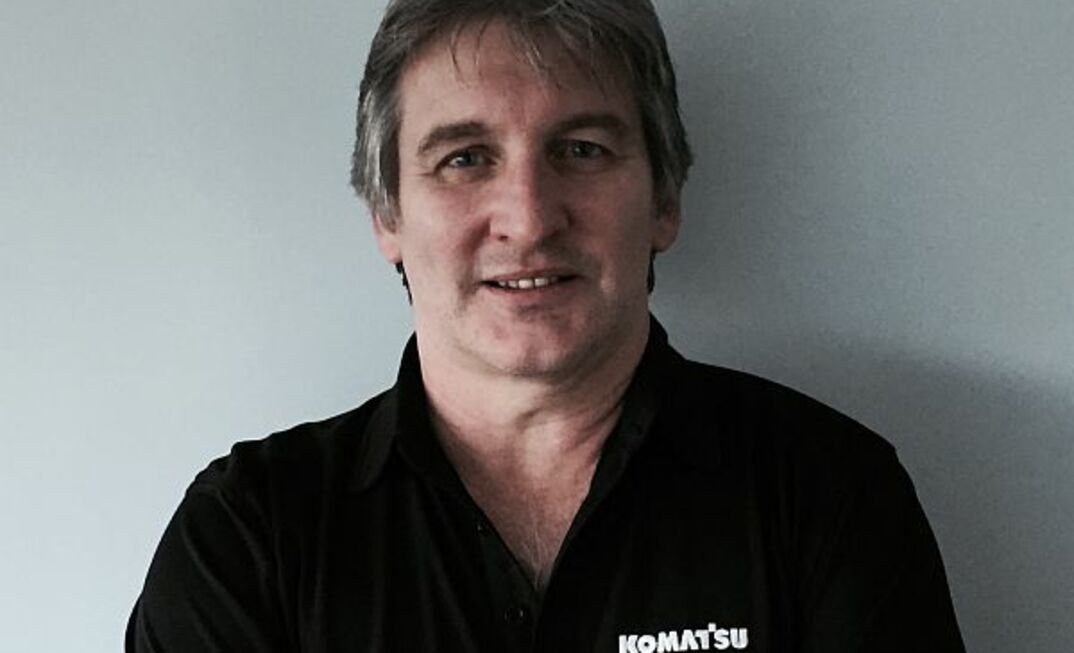That has certainly been one of the issues facing Komatsu, a company whose autonomous haul trucks are at the heart of one of the key productivity pushes in mining.
However, it is going to take more than a couple of robot trucks to fix the woes the mining industry has found itself in.
Komatsu Australia national product manager, mining Michael Hall said there was no doubt productivity was the current management focus.
“Most of our customers are a long way down their cost cutting path,” he said.
“We’ve been helping them whenever we can with that.
“The first part of the cull is cutting costs and that’s going back to their suppliers.”
Hall shares the view that many of the productivity issues facing the mining sector came from the huge production demands being placed on operations.
It was production at virtually any cost and important things such as maintenance fell by the wayside.
“The mining industry is really interesting,” Hall said.
“In times of boom cost may not be the major focus. It’s all about maximising production. We do get quite sudden changes. Eighteen months ago nobody was talking about productivity other than how can we better production.
“Within the space of 18 months the focus has completely changed. There are lots and lots of factors that get rolled into it. It can be difficult to separate out cause and effect.
“If you’re talking about straight production, the iron ore majors are producing more iron ore than they’ve ever done. In terms of tonnes they are doing better.”
Hall said one of the key areas miners needed to work on was equipment utilisation rates.
“Many years ago we used to have targets of 90% utilisation,” he said.
There are operations running well below this figure today.
“Definitely the market drives the behaviours,” Hall said.
“We’re working with our customers on how to best increase payloads and reduce cycle times. But there is not as much focus on end to end systems. At the moment people are looking at the low-hanging fruit such as payloads.”
Hall said increasing payloads alone could be detrimental to the process.
“First you must optimise the payload,” he said.
“Secondly, increasing payload may require some capital investment. There’s not a huge amount of work that’s been finished in that area at the moment. You have to look at what mines use for loading.
“It could mean you need another half bucket load to meet your payload requirement. Is it worth it if this increases your truck cycle times?”
Hall said there were other questions miners should consider.
“Is a new pit optimised for production?” he asked.
“Is your blasting to minimise powder factors or is it maximise fragmentation? You may not be getting the best results. A mine is one system and you need to be working on the whole system. Optimise the system, not just each component.”
One thing Komatsu has become famous for is its autonomous trucks, particularly those used in Rio Tinto’s iron ore operations in Western Australia’s Pilbara.
The key to this system is Rio Tinto’s Remote Operations Centre, an approach also taken by BHP Billiton with its iROC. But these remote operating centres may not be the sole answer.
“A remote centre brings with it additional problems,” Hall said.
“You get great visualisation but you also increase the amount of data you have to deal with. There are challenges in capturing all the information then sorting the data and using the outcome to manage and improve operations.”
Komatsu can also add to that data flow. It has its own range of vehicle information monitoring systems and also links into the Modular Mining Systems fleet management offerings.
“From the product side Komatsu provides Komtrax as its own remote monitoring solution,” Hall said.
“It provides location, machine health and performance information. We also use Modular Mining Systems products.”
Hall said Modular made its name with its Dispatch system but these days its systems “went way further than that”
“Their Mine Care package is a real time maintenance management system. They have a machine guidance system called ProVision, which improves the accuracy and decreases the cost of material movement.”
The combination of these technologies and knowledge morphed into that Komatsu autonomous product that is available on its 830E and 930E trucks.
Hall said there were many benefits with the Autonomous Haulage System, such as safety, maintenance, fuel and tyres.
“Komatsu run an AHS operations centre in Perth, monitoring the trucks day in and day out,” he said.
“We’re very happy with the way that fleet is performing.”
Hall said Komatsu was continuing to invest in facilities and people on the customer service side.
“We have a new Distribution Centre in Welshpool and a new branch facility at Port Hedland (both in WA).
“We also have registered training organisation recognition for high voltage training to provide qualified electricians working on electric drive trucks. Customer support is one of Komatsu’s key pillars.”
Technology is another – having autonomous trucks kind of points to that – and it is extending into other areas with products such as the Intelligent Machine Control dozer.
That is being installed on the smaller end of Komatsu’s market, such as the D61, but Hall said there was interest coming from mining customers.
“We’re also installing Modular’s ProVision product. This machine guidance system can be loaded directly from the mine plan, so the dozer operator knows exactly where they need to cut and fill.”
Operator training is another thing Komatsu offers.
“Our dozer guy keeps talking about how much skill has been lost in the industry,” Hall said.
He said Komatsu has always provided operator training whenever it delivered new machines.
“Especially with dozers we’re seeing the need to spend more than a few days with customers,” Hall said.
“We like to get back six months later after d

























